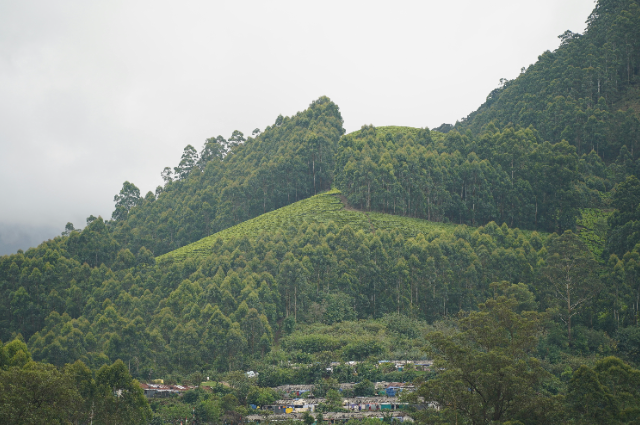
Photo by Manasa Putnala on Unsplash
Introduction:
Kerala, often referred to as God’s own country, seems to be operating under rules of its own. The recent landslide tragedy in Wayanad is a stark reminder of the escalating impact of climate change on India’s natural landscape. With torrential rains and extreme weather events becoming more frequent, the once predictable monsoon season has transformed into a harbinger of destruction. Wayanad, known for its lush green hills and serene beauty, now bears the scars of a catastrophe that claimed lives, displaced communities, and disrupted livelihoods. This tragedy is not an isolated incident but part of a growing pattern of natural calamities across India, exacerbated by the relentless advance of climate change. As global warming intensifies, the country faces an increased frequency of such devastating events, raising urgent questions about preparedness, resilience, and the future of India's vulnerable regions. It is crucial to understand that the devastation caused by these events extends beyond their immediate and visible impact. Over the past year, India has faced numerous incidents that, while often dismissed as typical weather phenomena, are in fact direct consequences of climate change. Between March and June 2024, vast regions of North India and the broader northern Indian subcontinent endured an exceptionally harsh heatwave, followed by heavy rainfall in late June, which led to widespread flooding and waterlogging. These extreme weather events, expected to become more frequent as the climate crisis deepens, highlight the urgent need for action. Unfortunately, this has become an all-too-familiar story, repeated year after year, with few truly interested in addressing the root causes. Some dismiss it as a natural calamity, while others attribute it to climate change. News channels cover the events, interview ecologists and climate experts, yet their warnings often go unheeded. The government is rarely questioned on its climate policies or commitment to nature conservation. In this article we are focusing on the recent Waynads tragedy , reasons behind it and how it was already predicted by our experts and how we can stop such future events. So let's first start by understanding the overall Kerala state.
Kerala: God’s Own Country
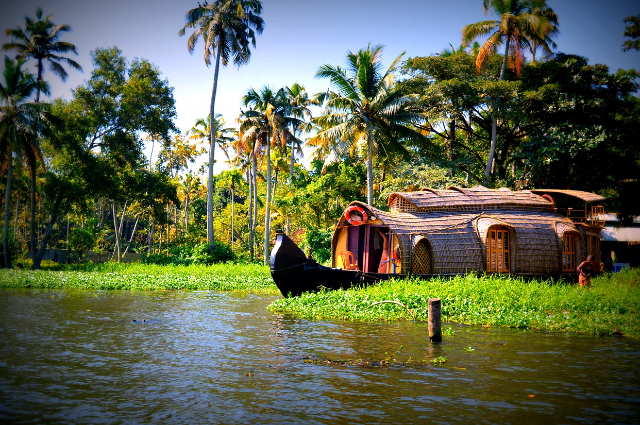
Kerala, located in the southwestern part of India, is a state rich in natural resources and diverse landscapes. Kerala, enjoys unique geographical features that have made it one of the most sought-after tourist destinations in Asia. Kerala was selected by the National Geographic Traveller as one of the 50 destinations of a lifetime and one of the thirteen paradises in the world. An equable climate, serene beaches, tranquil stretches of backwaters, lush hill stations and exotic wildlife are the major attractions of this land. Classical art forms, colourful festivals, exotic cuisine are some of the cultural marvels that await travellers. Ayurveda, the ancient Indian system of medicine and Panchakarma, the rejuvenation therapy in Ayurveda have also helped Kerala to gain a pan-global reputation as a worth-visit destination. This is how the official tourism website of Kerala aptly describes the state as a land that captivates everyone who visits. It is nearly impossible to encounter someone who has experienced the beauty, history, and heritage of Kerala without falling in love with its fantastic landscapes and welcoming people. Many are touched by the thought of settling down in this paradise, even if just once.
It is known for its numerous lakes, rivers, waterfalls, and backwaters, making it a popular destination for serene backwater tours. The state's topography includes coastlines along the Arabian Sea, the hills of the Western Ghats, and fertile valleys, supporting various soil types such as red, sandy, black, peat, and loamy soils. The forested regions of Kerala, covering an area of 9,400 km². It comprises tropical wet evergreen forests in the lower and mid-altitudes, tropical damp and arid deciduous forests in the middle altitudes, and mountainous subtropical and temperate (shola) forests in the hills. These dense evergreen forests are covered with lofty trees of 45 m or more height. A large number of species occur mixed together. This makes the canopy extremely dense. Ferns, mosses, aroids and orchids are seen in plenty. The undergrowth consists of cane, creeping bamboo, and palms. Kerala once boasted the most luxuriant tropical moist vegetation in the country. These forests were a treasure house of forest and mineral resources and played a critical role in controlling soil water regimes. Truly, Kerala offers an experience that feels out of this world.
However, this is only one side of the story. Alongside these richness, Kerala is frequently in the news for heart-wrenching reports of floods, landslides, tsunamis, coastal erosion, and other natural disasters. Among these, landslides have become increasingly common and frequent. The rising death tolls and devastating images from these events deeply affect us all, prompting us to question why this region, often referred to as "God's Own Country," has become so vulnerable and seemingly powerless against such calamities. Between 2015 and 2022, Kerala recorded 2,239 landslides, accounting for 59.2% of the total landslides in India. In recent years, Kerala has seen a significant rise in the frequency and severity of landslides, raising concerns about the underlying causes and the urgent need for effective mitigation strategies. 49.7% of the total state's area is landslide prone.
Landslides in Kerala:
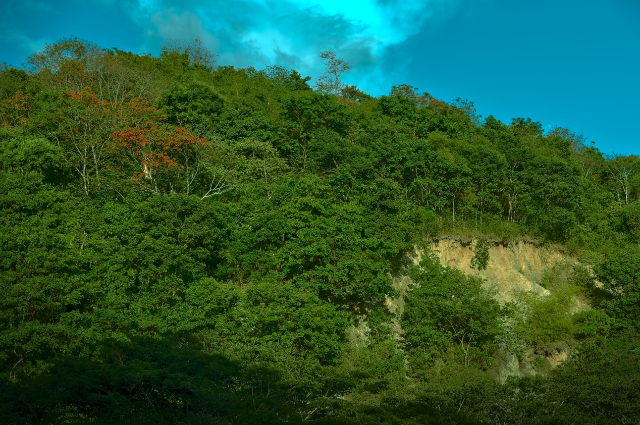
A landslide is the movement of rock, soil, and other debris down a slope due to the force of gravity. This movement can occur rapidly or gradually, and it is often triggered by factors such as intense rainfall, earthquakes, volcanic activity, or human activities like deforestation and construction. Landslides can cause significant damage by destroying buildings, roads, and other infrastructure, as well as by posing serious risks to human life and the environment. Earlier landslides are not considered to be as devastating as droughts, storms, or floods. They are also less studied because they are localised events. But their frequency is increasing as the effects of climate change intensify, and they are causing significant losses of lives and livelihoods. 2024 has been marked by landslides around the world. India accounts for about 8% of global fatalities due to landslides, and during the period 2001-21, landslides caused 847 deaths and displaced thousands, according to a team from IIT-Madras that has worked on the phenomenon. According to ISRO's National Remote Sensing Centre, Kerala is a major hotspot for landslide risk in India. Four of the top 10 districts in the country with the highest exposure to landslides are located in Kerala. These are Thrissur, Palakkad, Malappuram, and Kozhikode. To understand why Kerala is at more risk of landslides, first we need to understand the topography of Kerala.
Geographically, Kerala is divided into three regions.
- Highlands: Sloping down from the Western Ghats, this region is known for its plantations of tea, coffee, rubber, and cardamom.
- Midlands: Located between the mountains and lowlands, this area consists of hills and valleys where crops like cashew, coconut, rice, and various vegetables are cultivated.
- Lowlands: This coastal region includes river deltas, backwaters, and the Arabian Sea shoreline, with fisheries and coir production as the main industries, alongside coconut and rice farming.
Kerala's topography is diverse, with distinct geographical features that play a significant role in the frequent landslides experienced in the region. The most critical factor is the Western Ghats, which cover nearly 56% of Kerala's total geographical area and account for 42.7% of the entire Western Ghats region. Understanding how the Western Ghats contribute to these natural disasters is crucial in assessing the broader impact of climate change and human intervention on Kerala's landscape. This sets the stage for examining how these factors, combined with the state's unique topography, have led to an increase in the frequency and intensity of landslides in recent years.
Reason for Landslides:
The Western Ghats: Kerala's Ecological Lifeline
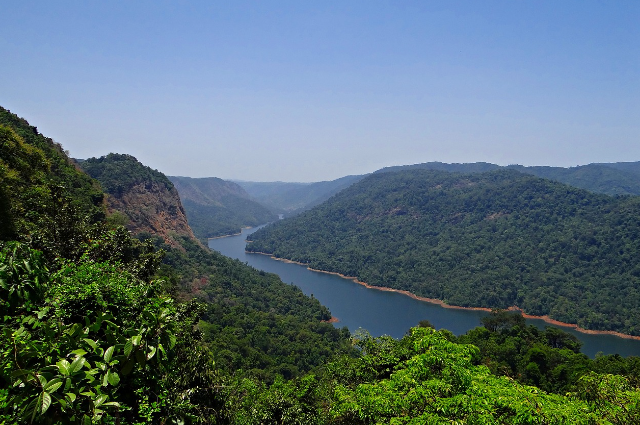
The Western Ghats, a UNESCO World Heritage Site, are one of the world’s eight hottest biodiversity hotspots. The Western Ghats, a range of hills running parallel to the Arabian Sea, stretch through the Indian states of Kerala, Tamil Nadu, Karnataka, Goa, and Maharashtra, spanning approximately 1,800 km in length. Kerala houses about 450 km of the Ghats, covering 56% of the state's total geographical area and accounting for 42.7% of the entire Western Ghats region. This region is crucial for the state's climate, ecology, and water supply, as it forms the watershed for all 44 rivers that sustain Kerala's agro-economy.
The Ghats rise to an average height of 1,500 meter, with notable peaks like Anamudi (2,695 meter), the highest peak in India outside the Himalayas. This mountain range forms an almost unbroken barrier along the state's eastern frontier, playing a significant role in regulating Kerala’s climate and allowing its people to live a sheltered life for centuries. The Ghats are also responsible for the state’s high rainfall.
Landslide Susceptibility in the Western Ghats:
The highlands of Kerala, particularly the Western Ghats, are extremely prone to landslides, with debris flows, locally called "Urul Pottal," being the most common type. Most of Kerala’s districts are susceptible to landslides, with Wayanad and Kozhikode being particularly vulnerable to deep-seated landslides, while Idukki and Kottayam are more prone to shallow landslides. The west-facing scarp slopes of the Western Ghats, which extend across the length of the mountain system, are the most landslide-prone regions.
In 2023, the Indian Space Research Organisation (ISRO) released a "Landslide Atlas of India," which identified landslide hotspots, particularly in the Western Ghats. The terrain here, consisting of steep hills, deep valleys, and gorges, coupled with an annual average rainfall as high as 500 cm from various seasonal showers, makes the region particularly vulnerable to slope instability.
Recent studies highlight that 29 major landslide events have been identified in recent years. The steep slopes (greater than 20°), thin soil layers, and human interventions like deforestation, terracing, and cultivation on these slopes have worsened the frequency and destructiveness of these landslides.
Gadgil Committee (WGEEP):
The Gadgil Committee, officially known as the Western Ghats Ecology Expert Panel (WGEEP), was formed in 2010 by India’s Ministry of Environment to assess the ecological status of the Western Ghats and suggest measures for its conservation.
Key Recommendations:
- Designate the entire Western Ghats as Eco Sensitive Zones (ESZ).
- Phase out mining in ESZ 1 within 5 years, and ban new mining and coal-based power plants in ESZ 1 and 2.
- Ban chemical pesticides within 8 years and prohibit plastic bags within 3 years.
- Impose zero-emission requirements for existing red and orange industries.
- Prohibit land conversion from forest or public to private ownership.
- No new dams, roads, or major construction projects in ESZ 1 and 2.
- Establish a Western Ghats Ecology Authority (WGEA) to govern environmental regulations, with a bottom-up approach starting at the Gram Panchayat level.
Criticisms:
- Seen as overly restrictive, with potential economic impacts on development, energy needs, and revenue.
- Concerns about the necessity of a new WGEA, given the existence of other environmental agencies.
Kasturirangan Committee:
The Kasturirangan Committee was set up in August 2012 to review the recommendations of the Gadgil Committee. It took a more balanced approach, aiming to reconcile environmental conservation with developmental needs.
Key Recommendations:
- Designate 37% of the Western Ghats as Eco-Sensitive Areas (ESA).
- Ban mining, quarrying, and thermal power plants in ESAs and phase out ongoing mining activities within 5 years.
- Limit hydroelectric projects to areas that maintain a 30% ecological flow.
- Promote community-based eco-sensitive tourism and plan transport infrastructure with minimal ecological damage.
Criticisms:
- Relied heavily on aerial data, leading to inaccuracies in ground-level assessments.
- The bottom-up approach was criticized as impractical, especially in densely populated regions.
- Concerns were raised about farmer displacement and potential environmental damage from relaxed restrictions in certain areas
The Western Ghats are an ecological treasure trove, crucial to Kerala’s climate, water supply, and biodiversity. However, unchecked human activities like deforestation, mining, unregulated tourism, and poorly planned infrastructure projects have severely destabilized the region, increasing the frequency and severity of landslides. Reports from both the Gadgil and Kasturirangan Committees highlight the need for stricter regulations and more sustainable practices to protect this fragile ecosystem. If left unaddressed, the consequences of these landslides will continue to grow, threatening not only the environment but also the lives and livelihoods of the people dependent on this region.
Rainfall Triggered by Climate Change:
Climate change is the most debatable topic of our time. Climate change is a natural phenomenon but the temperature increase observed in the 20th century is largely due to human activities, such as burning fossil fuels and urbanization. These changes affect the seasonality and intensity of monsoons in Asia. Since the 1970s, increases in global temperatures have correlated with shifts in global precipitation patterns, leading to more erratic and intense rainfall, which has significant consequences on human life, infrastructure, and food security in the future. The Climate in Asia 2022 report highlights that Asia is warming faster than the global average. Asia was the most disaster-prone region globally in 2023, with floods and storms causing the most casualties and economic losses. On 23 Aug 2024 the southern Tripura districts had the worst of the floods and 34,000 people were displaced. On 12 August desert areas of Kutch, parts of Rajasthan face severe flooding due to ‘exceptionally’ heavy rainfall , which leads to nearby 22 deaths in Rajasthan. Similarly , Kerala is experiencing heavy rains in recent years. Kerala experiences an annual average rainfall as high as 500 cm from the South-West, North-East, and Pre-Monsoon showers. Kerala floods of 2018 was a stark reminder of this. Studies have shown that prolonged and intense rainfall, or a combination of both, along with the resulting persistence and variations of pore pressure, are the most important triggers for landslides. This movement destroys everything in its path. Landslides in this region are typically triggered by intense rainfall and topography of western ghats which together contribute to the life threatening events.
Agriculture:
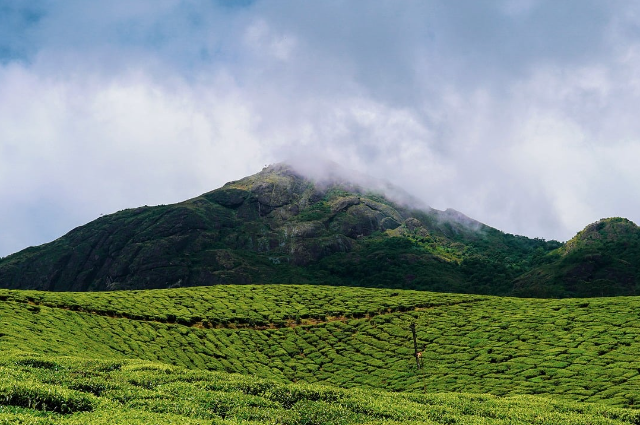
Because of it's diverse climatic conditions Kerala’s land is fertile for the farming of various crops. Agriculture plays a central role in Kerala's economy, with major crops including paddy, coconut, pepper, cashew, and cassava, along with plantation crops like rubber, tea, and coffee. Kerala is known as the spice garden of India, Wayanad and Idukki are the significant spice producers It accounts for 91 % of rubber production and more than 96 % of spices production. Coconut, rubber, pepper, and coffee are the main cash crops in Kerala. Kerala produces about 70% of India's natural rubber, which contributes significantly to the country's total output. Just west of the mountains lie the midland plains, a swath of land running along central Kerala. This area features rolling hills and shallow valleys, creating a gentler landscape than the highlands. In the lowest lands, the midlands region hosts paddy fields, while elevated slopes support groves of rubber and fruit trees, in addition to other crops such as black pepper and tapioca. Furthermore, Kerala contributes a huge part to the export of the country.
Land reform in Kerala has resulted in a drastic change in the land holding pattern of Kerala. Agricultural land of the state accounts for 55%, while forest land covers 28 % and 11 % lands are for non-agricultural use. Tea and coffee plantations which were established mainly in the 19th and 20th centuries. Since the 1970s, Kerala has experienced rapid agricultural land-use changes, with a shift towards monoculture and cash-crop agroforestry, often at the expense of traditional home gardens. Additionally, paddy lands have been converted into simpler agroforests and other agricultural crops. Rubber was introduced in Kerala in the early 20th century and now covers about 21% of the state's total cropped area. It has largely replaced natural vegetation and other crops like tapioca, cashew, and coconut. Research indicates that rubber plantations have negative environmental impacts, such as the loss of natural vegetation. However, the economic benefits of rubber encourage farmers to continue growing it. Most of the landslides that are taking place in Kerala are around plantation areas, indicating another major triggering factor — agricultural activities such as monocropping, in which large, native trees, which hold the top soil to the bedrock, are cut down. These trees are being replaced by big plantation crops, such as tea and coffee, which have shallow roots. This leads to loosening of top layer of soil which promotes landslides.
Deforestation and Land Use Changes:
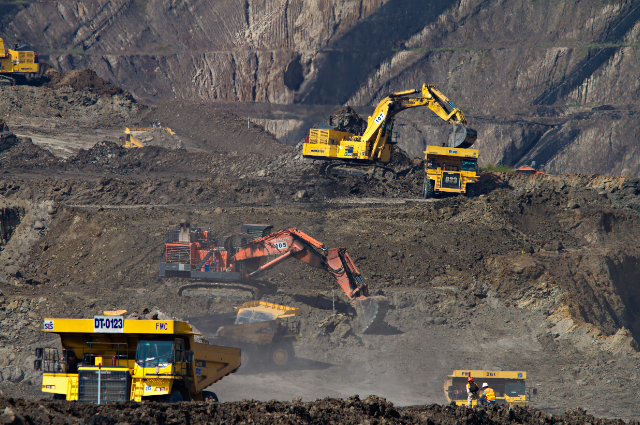
- Deforestation: The significant reduction in forest cover, which now accounts for less than 20% of the land area, has left the Western Ghats and surrounding regions more susceptible to landslides. Forests play a crucial role in maintaining soil stability, and their removal for agriculture, urbanization, and other purposes has weakened the region's natural defence against landslides.
- Improper Land Use: The cultivation of crops that do not contribute to soil stability, along with unplanned construction activities, has further degraded the land. The replacement of deep-rooted vegetation with shallow-rooted crops and the expansion of built-up areas have destabilized slopes, making them more prone to collapse.
- Unregulated Tourism: The rise of unauthorized homestays and resorts in Wayanad, which often violate environmental norms, has significantly altered the land-use patterns. These establishments not only escape regulatory oversight but also contribute to environmental degradation. Their unchecked expansion in landslide-prone zones has exacerbated the risk of disasters.
- Construction and Infrastructure Development: The construction of roads, bridges, and other infrastructure without proper scientific planning has disrupted the natural landscape, leading to increased vulnerability to landslides. Haphazard and unscientific construction practices have undermined the stability of slopes.
- Mining and Quarrying: Despite the known sensitivity of the Western Ghats, the state government has allowed mining and quarrying activities in the region. These activities have further destabilized the land, contributing to the frequency of landslides.
- Lack of regulatory mechanism: The failure to regulate construction and tourism activities, particularly in landslide-prone areas, has contributed to the increased frequency of landslides. Reports indicate that many resorts and other establishments operate without proper approvals, adding to the environmental strain on the region.
Horror of Waynad’s Tragedy:
Wayanad is a district located in the northeast of Kerala, India. It is notable for being the only plateau in Kerala, forming a continuation of the Mysore Plateau, which is the southern part of the Deccan Plateau. Situated in the Western Ghats, Wayanad is set at an altitude ranging from 700 to 2,100 meters. The district’s highest point is Vellari Mala, a peak standing at 2,240 meters, located at the trijunction of Wayanad, Malappuram, and Kozhikode districts. Wayanad is primarily a rural district, and its Wayanad Wildlife Sanctuary is a lush, forested region.
On 30th July 2024, a devastating landslide hit three villages in Wayanad district, located in the foothills of the Western Ghats. The district experienced three landslides within four hours, making it one of the deadliest disasters in Kerala's history. The landslides were triggered by heavy rains that caused hillsides to collapse, destroying the areas below.
Impact and Casualties:
Over 500 people lost their lives, and more than 200 were injured. The landslide also resulted in significant infrastructure damage, with more than 1,555 houses and other buildings, including schools, a dispensary, the panchayat bhavan, the electricity board office, and 136 community buildings being destroyed. The affected villages, Punjirimattom, Mundakkai, Chooralmala, and Vellarimala, are situated on hilly terrain and primarily used for tea and coffee plantations, owned by Harrisons Malayalam Limited. These villages border the Nilambur forests and the Chaliyar River, and their residents are mostly agricultural workers who have lived in the area for generations.
The Western Ghats in Kerala experienced heavy rainfall prior to the landslides, with 204.5 mm of rain in the first 24 hours and 372.6 mm in the following 24 hours. This continuous heavy rainfall exacerbated the landslide risk and delayed rescue operations. Despite the challenging conditions, search operations began later on 30th July when the rains subsided. Numerous rescue teams were deployed, and the Indian Army established a command-and-control centre in Kozhikode district on 31st July to coordinate humanitarian assistance and disaster relief operations. Over 4,000 people were rescued. and more than 10,000 individuals were relocated to 93 disaster relief camps in Wayanad. These efforts were critical in managing the aftermath of the tragedy and providing shelter and support to the affected population.
Way Forward:
This incident highlights the urgent need for stronger climate finance mechanisms to assist vulnerable countries in Asia in adapting to and addressing loss and damage caused by climate-related disasters. It emphasizes the importance of improved climate preparedness across the region, particularly through early warning systems and disaster risk reduction strategies. Notably, issuing early warnings within 24 hours can reduce disaster damage by up to 30%. To succeed in managing climate risks, a shift in how we approach environmental conservation is essential. While current practices often focus on restrictions, it is crucial to offer practical solutions or alternatives to affected communities. In India, ecologically sensitive areas are not just wilderness but also the habitats of people. To protect these regions, conservation efforts must be inclusive and provide communities with tangible incentives to become active partners in these initiatives.
In addressing environmental challenges, alternatives like intercropping with other crops could help mitigate some of the adverse impacts of plantation crop. Government agencies promoting plantations should consider the environmental consequences and advocate for sustainable practices in their decision-making processes.
The landslide in Wayanad serves as a stark reminder of the exacerbating effects of climate change and human activities such as quarrying and deforestation in ecologically sensitive zones. The affected village had been identified as ecologically sensitive by the 2013 Kasturirangan Committee report, which recommended restricting destructive activities like mining and quarrying in such areas. Although the Union Environment Ministry accepted the report, amendments requested by Kerala resulted in less stringent protections, allowing harmful activities to persist. Local communities have historically opposed conservation efforts, fearing the loss of livelihoods and agricultural practices, driven by top-down conservation policies.
We need a shift in conservation strategies to include community participation and provide incentives for sustainable development and green livelihoods, such as eco-tourism and sustainable plantations. Collaborative governance is essential, fostering cooperation between state and local authorities, NGOs, and communities to ensure the effective implementation of environmental policies. Economic incentives should be offered, including subsidies for sustainable agriculture and penalties for illegal activities. Additionally, increasing education and public awareness about the importance of the Western Ghats and the consequences of environmental degradation through media campaigns and educational initiatives is crucial.
Conclusion:
The Wayanad landslide tragedy is a stark reminder of the urgent need to rethink and reform our environmental management practices in the face of escalating climate change. The disaster serves as yet another grim example of nature’s response to human apathy and greed. As the Kerala High Court aptly noted, “If we do not mend our ways and take affirmative remedial action now, perhaps it will be too late.”
This tragedy underscores the necessity of learning from such catastrophic events to prevent future occurrences. It is a call to action for governments, communities, and individuals alike to adopt sustainable practices, prioritize environmental conservation, and integrate local communities into these efforts. The choices we make today will determine the future of our planet and the safety of generations to come. Now, more than ever, we must act decisively to protect our environment and mitigate the impacts of climate change before it is too late.
